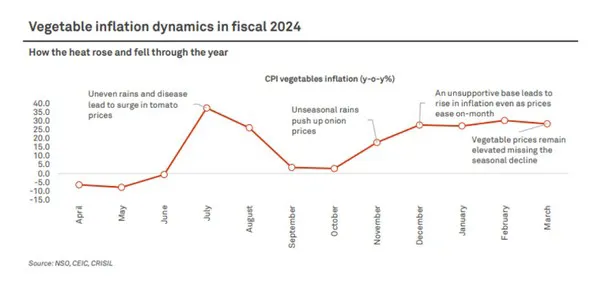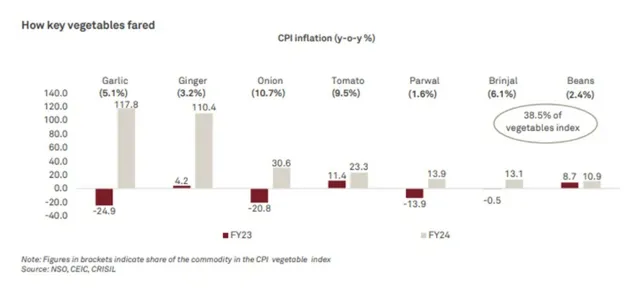India is facing continued volatility in vegetable prices due to above-normal temperatures, as reported by CRISIL. This volatility is a significant factor in food inflation, with vegetable prices being notably susceptible to weather conditions. The report indicates that vegetable inflation is highly volatile, with atypical weather patterns, warmer weather, uneven rains, and pest attacks contributing to higher-than-usual prices. The vegetable price index surpassed its typical seasonal patterns, leading to a surge in average vegetable inflation.

In fiscal 2024, vegetable inflation in India reached an average of 14.9 percent, a notable increase from the 3 percent recorded in fiscal 2023 and the decadal average of 5.6 percent. Key vegetables such as tomatoes, onions, garlic, and ginger saw substantial price hikes. Despite predictions of an above-normal southwest monsoon, which could benefit vegetable prices, the distribution of rainfall and persistent above-normal temperatures may keep prices elevated.

The CRISIL report underscores the importance of addressing climate risks and suggests structural solutions like enhancing cold storage facilities, promoting hybrid weather-resistant seeds, and reducing post-harvest losses to mitigate the impact of climate change on vegetable production and prices.
Source: republicworld.com
